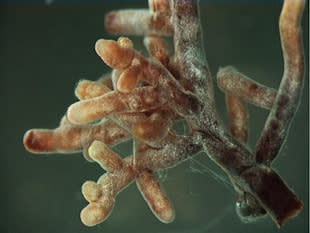 The Sideshow
The SideshowStudy: Plants communicate with each other via underground fungi

A new study has demonstrated that plants can use an underground network of fungi to warn each other about incoming insect attacks.
Carried out by researchers from the University of Aberdeen, the James Hutton Institute and Rothamsted Research, the study demonstrated that the plants are able to send warnings of incoming aphids to other plants connected to their network. The plants then send out a chemical signal that repels aphids and attracts wasps, a natural aphid predator.
The research follows previous findings that have shown plants can communicate similar chemical warnings through the air.
The new study says plants can connect with other via a common fungus known as mycorrhizae. "Mycorrhizal fungi need to get [products of photosynthesis] from the plant, and they have to do something for the plant," John Pickett of Rothamsted Research told the BBC.
"In the past, we thought of them making nutrients available from the [roots and soil], but now we see another evolutionary role for them in which they pay the plant back by transmitting the signal efficiently," he said.
University of Aberdeen’s David Johnson added, "Our understanding of ecological systems has not considered the fact that plants are interconnected in this way. It could have major implications for our understanding of how one organism affects another."
Conversely, the plants in the study not connected to the fungal network did not send out warning signals to other plants after coming under attack. The in-network plants were also covered with bags to ensure that they were not actually sending the signals through the air.
Pickett said the discovery could lead to farms using the fungi as an advance warning system for their crops. In theory, one “sacrificial” plant would be kept at a distance from the crops. If it fell under attack from insects, it would warn the rest of the plants, giving them time to mount a viable defense.

